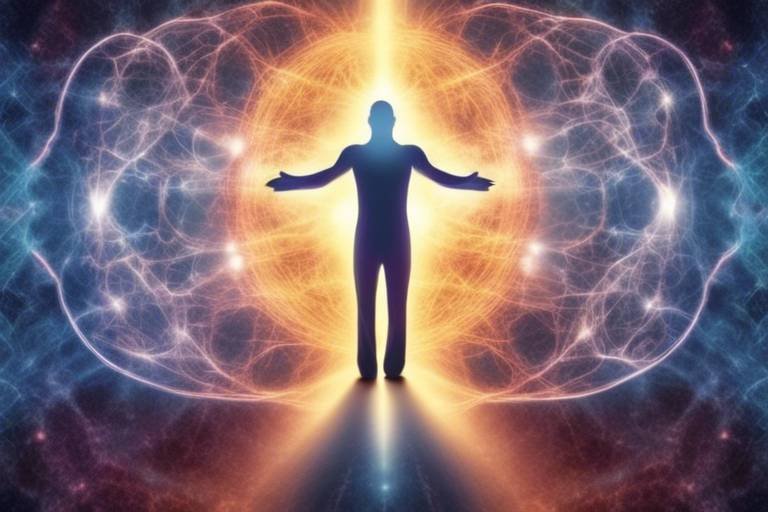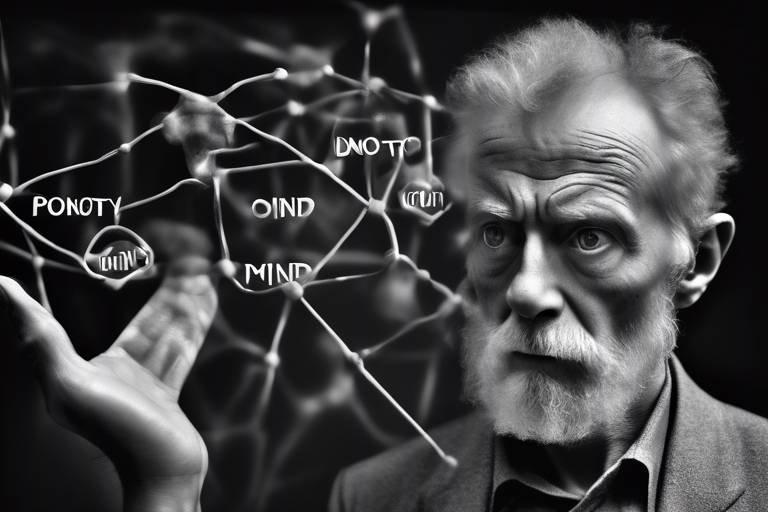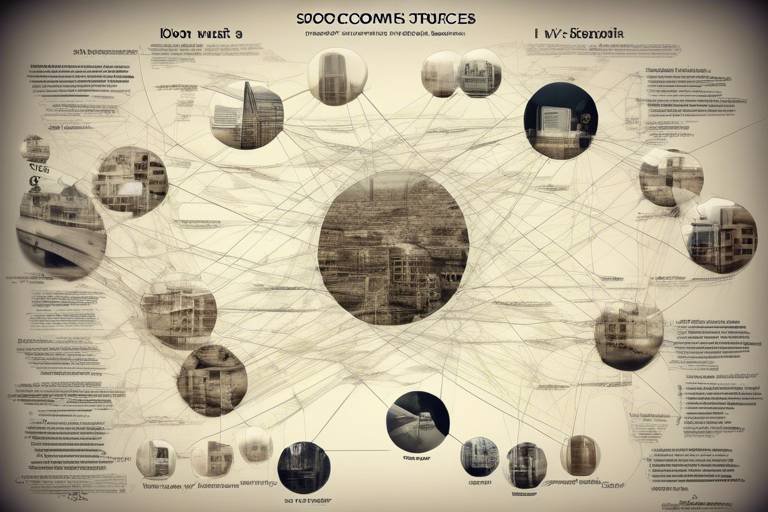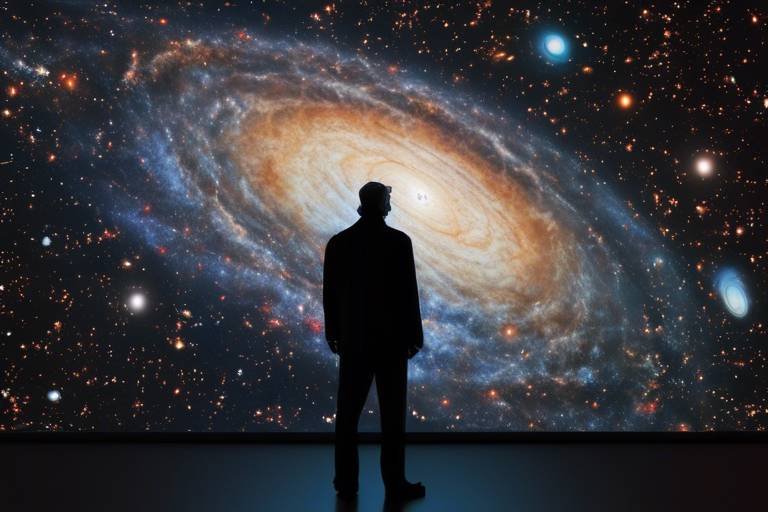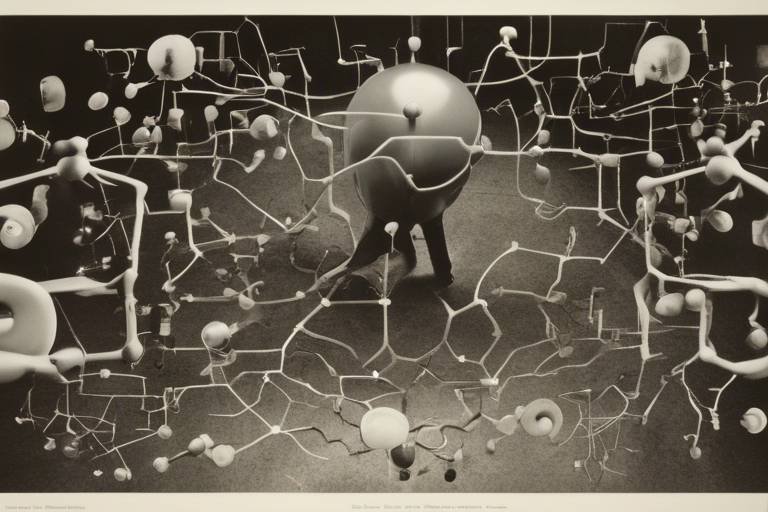Can Metaphysics Solve the Mind-body Problem?
The mind-body problem has fascinated philosophers, scientists, and curious minds alike for centuries. It raises profound questions about the nature of consciousness and the relationship between our mental states and the physical world. Can metaphysics, the branch of philosophy that explores the fundamental nature of reality, offer solutions to this age-old dilemma? As we embark on this intellectual journey, we'll uncover the intricate tapestry woven between metaphysics and the mind-body problem, examining various philosophical perspectives that have emerged over time.
At its core, the mind-body problem grapples with understanding how our thoughts, feelings, and consciousness relate to our physical bodies. Imagine your mind as a conductor of an orchestra, directing the symphony of your body’s actions. But what happens when the music stops? How do the notes of your thoughts and emotions translate into the physical movements of your limbs? This is the crux of the mind-body problem, and it has sparked numerous debates and theories throughout history.
Metaphysics seeks to answer questions that lie beyond the physical realm, probing into the essence of existence and the nature of reality itself. By examining metaphysical perspectives, we can gain insights into how consciousness might emerge from or interact with the physical world. From dualism, which posits a distinction between mind and body, to physicalism, which claims that everything is fundamentally physical, each perspective offers unique interpretations of our conscious experience.
As we navigate through these philosophical waters, we must consider the implications of each viewpoint. Can dualism, for instance, truly account for the seamless interaction we experience between our thoughts and actions? Or does physicalism provide a more coherent explanation by grounding consciousness in the brain's activity? And what about idealism, which suggests that reality is fundamentally mental? These questions will guide our exploration, revealing not only the complexities of the mind-body relationship but also the potential for metaphysical solutions.
In the following sections, we will delve deeper into these perspectives, dissecting their strengths and weaknesses, and ultimately seeking to understand whether metaphysics can indeed provide answers to the mind-body problem. So, buckle up as we embark on this philosophical adventure—who knows what revelations await us!
- What is the mind-body problem? The mind-body problem is a philosophical question regarding the relationship between mental states (thoughts, feelings) and physical states (the body, brain).
- Can metaphysics provide solutions to the mind-body problem? Metaphysics explores fundamental questions about reality and existence, potentially offering insights into the nature of consciousness and its relation to the physical world.
- What are the main perspectives on the mind-body relationship? The main perspectives include dualism (mind and body as separate), physicalism (everything is physical), and idealism (reality is fundamentally mental).

The Nature of the Mind-body Problem
The mind-body problem is a fascinating and complex philosophical issue that has puzzled thinkers for centuries. At its core, it grapples with the question of how our mental states—thoughts, feelings, and consciousness—relate to the physical world, particularly our bodies. Imagine for a moment the intricate dance between the mind and body: while the body is tangible and observable, the mind operates in a realm that feels almost ethereal. This duality raises profound questions: Are we merely biological machines, or is there something more to our existence?
Historically, this problem has been a hotbed of debate among philosophers, scientists, and theologians alike. The discussions often revolve around a few key inquiries:
- What is the nature of consciousness?
- How do mental states influence physical actions?
- Can consciousness exist independently of the body?
To truly understand the mind-body problem, we must delve into its rich historical context. Ancient philosophers like Plato and Aristotle laid the groundwork by exploring the essence of being and existence. Fast forward to the Enlightenment, where René Descartes famously posited that the mind and body are separate entities—a view known as dualism. This perspective sparked a cascade of philosophical inquiries and scientific investigations that continue to this day.
As we navigate through the centuries, the mind-body problem has evolved, reflecting the changing landscape of human thought. From the mechanistic views of the Enlightenment to the emergence of modern neuroscience, each era has contributed layers of complexity to our understanding of consciousness. Today, the problem remains as relevant as ever, prompting questions that resonate with our everyday experiences. For instance, have you ever felt your heart race in response to a stressful thought? This interplay between mind and body illustrates the profound connection that continues to intrigue scholars and seekers alike.
In summary, the nature of the mind-body problem is not merely an academic exercise; it is a deeply personal inquiry that touches on the essence of what it means to be human. As we explore various metaphysical perspectives in the following sections, we will seek to unravel this intricate relationship, shedding light on the mysteries of consciousness and existence.

Metaphysical Perspectives on Consciousness
When we dive into the depths of consciousness, we find ourselves navigating a complex landscape filled with various metaphysical perspectives. Each viewpoint offers a unique lens through which we can examine the intricate relationship between the mind and body. It's like looking at a multifaceted gem; depending on how you turn it, you might see different colors and patterns. In this exploration, we will discuss three primary metaphysical frameworks: dualism, physicalism, and idealism. Each of these perspectives provides distinct insights into what consciousness is and how it interacts with the physical world.
To start, dualism, a term that often brings to mind the famous philosopher René Descartes, posits that the mind and body are separate entities. Imagine them as two dancers performing a delicate ballet; they influence each other but exist in their own realms. This perspective suggests that mental states, such as thoughts and emotions, are fundamentally different from physical states, like brain activity or bodily sensations. Dualism raises intriguing questions about how these two distinct substances communicate. Can a thought trigger a physical reaction? How does a feeling manifest in the body? These questions have led to various interpretations and adaptations of dualism over the centuries.
On the other hand, we have physicalism, which takes a more grounded approach by asserting that everything, including consciousness, can be explained through physical processes. Think of it as a complex machine where every cog and wheel has a specific function, contributing to the overall operation. Physicalists argue that understanding the brain's structure and function can ultimately unlock the mysteries of the mind. However, this perspective isn't without its challenges. For instance, it raises questions about subjective experiences—how do we account for the rich tapestry of feelings and sensations that seem to transcend mere physical explanations?
Finally, idealism presents a fascinating counterpoint to both dualism and physicalism. This perspective posits that reality is fundamentally mental, suggesting that the mind is not just a byproduct of physical processes but rather the very essence of existence itself. Imagine a painter creating a world on canvas; in this view, our perceptions and thoughts shape the reality around us. Idealism challenges traditional notions of the mind-body problem, proposing that what we perceive as external reality is intricately linked to our consciousness. This raises profound implications for our understanding of existence and invites us to reconsider the nature of reality itself.
In summary, the metaphysical perspectives on consciousness—dualism, physicalism, and idealism—each offer valuable insights into the mind-body relationship. As we continue to explore these frameworks, we may find that they are not mutually exclusive but rather complementary pieces of a larger puzzle. The journey into the nature of consciousness is an ongoing adventure, filled with questions that provoke thought and inspire deeper inquiry.
- What is dualism? Dualism is the philosophical view that the mind and body are distinct entities that interact with each other.
- How does physicalism explain consciousness? Physicalism posits that consciousness arises from physical processes in the brain and can be fully explained through scientific inquiry.
- What is idealism? Idealism is the belief that reality is fundamentally mental and that our perceptions shape the world around us.
- Can these perspectives coexist? Yes, many philosophers argue that these perspectives can complement each other and provide a more holistic understanding of consciousness.

Dualism: Mind and Body as Separate Entities
When we talk about dualism, we're diving into the fascinating idea that the mind and body are not just intertwined but are actually distinct entities. Imagine your mind as a vibrant, swirling cloud of thoughts, emotions, and consciousness, while your body is like a sturdy, physical vessel navigating through the world. This perspective, championed by philosophers like René Descartes, suggests that our mental states—thoughts, feelings, and experiences—exist independently of our physical form. It's a bit like having a computer (your body) and the software (your mind) running different programs; they interact, but they are fundamentally different.
Dualism raises some intriguing questions about how these two realms interact. For instance, how does a thought translate into a physical action? When you decide to pick up a cup of coffee, what happens between your conscious decision and the movement of your arm? This is where the complexities of dualism come into play. The traditional view posits that the mind influences the body and vice versa, but the mechanics of this interaction remain a topic of heated debate. Some philosophers liken this relationship to a dance—two partners moving together, yet each retaining their unique identity.
One of the most significant implications of dualism is its challenge to our understanding of consciousness. If the mind is separate from the body, then what is consciousness? Is it a product of the brain, or does it exist in its own right? This question opens up a Pandora's box of philosophical inquiry, leading us to explore realms beyond the physical. In essence, dualism invites us to consider that our thoughts and feelings might not be merely byproducts of neural activity but could be something more profound.
However, dualism isn't without its critics. Many argue that the notion of a non-physical mind interacting with a physical body leads to a host of complications. For instance, if the mind exists outside of the brain, how can it influence physical processes? This is where the rubber meets the road, and the debate intensifies. Critics often point to advancements in neuroscience that suggest our thoughts and emotions are deeply rooted in our brain's physical structure. This raises a compelling question: if our mental experiences are tied to our biology, can we still maintain the dualist perspective?
To further illustrate the dualist viewpoint, consider the following table that outlines the key characteristics of dualism compared to physicalism:
| Aspect | Dualism | Physicalism |
|---|---|---|
| Nature of Mind | Non-physical | Physical |
| Interaction | Mind influences body | Body produces mind |
| Consciousness | Separate from brain | Emerges from brain activity |
| Philosophical Basis | Metaphysical | Empirical |
In conclusion, dualism presents a compelling framework for understanding the mind-body relationship, inviting us to explore the deeper meanings of consciousness and existence. While it raises profound questions, it also faces significant challenges, particularly from the advances in our understanding of the brain. As we continue to unravel the mysteries of consciousness, the dualist perspective remains a vital part of the conversation, urging us to consider the intricate dance between our minds and bodies.
- What is dualism? Dualism is the philosophical view that the mind and body are distinct entities, each with its own nature and properties.
- Who proposed the concept of dualism? The concept of dualism was famously proposed by philosopher René Descartes.
- What are the main challenges to dualism? Critics argue that dualism struggles to explain how a non-physical mind can interact with a physical body, especially in light of scientific advancements in neuroscience.
- How does dualism differ from physicalism? Dualism posits that the mind is non-physical, while physicalism asserts that everything, including consciousness, can be explained in physical terms.

Substance Dualism vs. Property Dualism
When diving into the depths of dualism, it's essential to distinguish between substance dualism and property dualism. These two theories offer distinct views on how the mind and body interact, and understanding their differences can illuminate our grasp of consciousness. Substance dualism, famously championed by René Descartes, posits that the mind and body are composed of fundamentally different substances. In this view, the mind is a non-physical entity, separate from the brain and body, which are physical. This separation raises intriguing questions about how these two distinct substances can interact. How can something non-physical affect something physical? This is the crux of the challenge faced by substance dualists.
On the other hand, property dualism takes a different route. Rather than asserting that the mind and body are made of different substances, property dualism suggests that while both the mind and body might be composed of the same substance (typically understood as physical), they possess different properties. For example, mental states—like thoughts, feelings, and perceptions—are seen as properties that arise from the physical processes of the brain. This perspective allows for a more integrated view of the mind-body connection, suggesting that mental phenomena are deeply intertwined with physical processes, yet still distinct in their characteristics.
To summarize these differences, consider the following table:
| Aspect | Substance Dualism | Property Dualism |
|---|---|---|
| Nature of Mind and Body | Different substances | Same substance, different properties |
| Interaction | Challenges in explaining interaction | Interaction through physical processes |
| Philosophical Proponents | René Descartes | Various modern philosophers |
Both perspectives have their strengths and weaknesses. Substance dualism, while providing a clear distinction between mind and body, struggles to account for how they interact, leading to skepticism from the scientific community. In contrast, property dualism offers a more scientifically palatable view, but it raises questions about the true nature of consciousness. Can mental properties be fully reduced to physical processes, or is there something inherently unique about our mental experiences? These questions not only fuel philosophical debate but also inspire ongoing research in neuroscience and psychology.
Ultimately, the exploration of substance and property dualism reveals the complexities of the mind-body problem. As we seek to understand consciousness, these dualistic frameworks provide valuable lenses through which we can examine our existence and the intricate relationship between our mental and physical selves.
- What is substance dualism? Substance dualism is the theory that the mind and body are made of different substances, with the mind being non-physical.
- What is property dualism? Property dualism suggests that while the mind and body may be made of the same substance, they have different properties.
- How do these theories relate to the mind-body problem? Both theories attempt to explain the relationship between mental states and physical processes, each offering unique insights and challenges.
- Which theory is more widely accepted? Property dualism tends to be more accepted in contemporary discussions, as it aligns better with scientific findings.

Challenges to Dualism
Despite its historical significance and the intriguing notions it presents, dualism faces a myriad of challenges that question its validity in the context of modern science and philosophy. One of the primary criticisms arises from advancements in neuroscience, which increasingly demonstrate that mental states are closely correlated with physical processes in the brain. For instance, studies using brain imaging technologies have shown that specific thoughts, emotions, and experiences can be traced back to identifiable neural activities. This connection raises the question: if the mind is truly separate from the body, how can physical changes in the brain influence our consciousness?
Furthermore, dualism struggles to explain the interaction problem. If the mind and body are distinct substances, how do they interact? This question has puzzled philosophers for centuries. The idea that a non-physical mind could exert influence over a physical body seems counterintuitive and challenges our understanding of causality. To illustrate, consider the analogy of trying to push a car with an invisible force; it raises eyebrows and invites skepticism. Critics argue that dualism does not provide a satisfactory account of how this interaction occurs without invoking mysterious or untestable mechanisms.
Additionally, the rise of physicalism presents a formidable challenge to dualist perspectives. Physicalism posits that everything, including consciousness, can be explained through physical processes. As scientific inquiry continues to unravel the complexities of the brain and its functions, the dualist view appears increasingly out of step with contemporary understanding. The argument follows that if everything we experience can be traced back to physical interactions, then the notion of a separate, non-physical mind becomes less tenable.
Moreover, the emergence of neurophilosophy has further complicated the dualist narrative. This interdisciplinary approach combines neuroscience and philosophy, suggesting that philosophical questions about the mind must be informed by empirical findings. As a result, many philosophers are now advocating for a more integrated view that does not strictly adhere to dualism. They argue that understanding consciousness requires a synthesis of both physical and mental perspectives, rather than a rigid separation.
In summary, while dualism has played a pivotal role in the philosophical discourse surrounding the mind-body problem, it faces significant challenges from scientific advancements, the interaction problem, the rise of physicalism, and the influence of neurophilosophy. These criticisms not only question the coherence of dualist theories but also invite a broader examination of how we conceptualize the relationship between mind and body in an ever-evolving landscape of knowledge.
- What is dualism? Dualism is the philosophical view that the mind and body are distinct entities, with the mind being non-physical and the body being physical.
- What are the main criticisms of dualism? Key criticisms include the interaction problem, challenges from neuroscience, and the rise of physicalism, which argues that everything can be explained in physical terms.
- How does neuroscience challenge dualism? Neuroscience shows that mental states are often correlated with brain activity, suggesting a closer relationship between the mind and body than dualism allows.
- What is neurophilosophy? Neurophilosophy is an interdisciplinary field that combines neuroscience and philosophy to address questions about the mind and consciousness.

Physicalism: The Mind as a Product of the Brain
Physicalism is a compelling philosophical stance that asserts everything about the mind can ultimately be explained through physical processes. This perspective suggests that our thoughts, feelings, and consciousness are not separate entities but rather products of the brain's intricate workings. Imagine your brain as a sophisticated computer: just as software runs on hardware, mental experiences arise from the complex interactions of neurons and synapses. This analogy helps clarify why physicalists believe that understanding the brain is key to unraveling the mysteries of the mind.
At its core, physicalism challenges the dualistic notion that mental states are fundamentally different from physical states. It posits that every mental event corresponds to a physical event in the brain. For instance, when you feel happy, a specific set of neural activities occurs. This relationship suggests that by studying brain activity through advanced imaging techniques, we can map out the neural correlates of various mental states. In this way, physicalism aligns closely with scientific inquiry, making it a favored perspective among many neuroscientists and philosophers alike.
However, the implications of physicalism extend beyond mere brain activity. It raises profound questions about the nature of consciousness itself. If our thoughts and feelings are purely physical phenomena, what does that mean for our sense of self? Are we merely biological machines, or is there something more to our existence? These questions highlight the ongoing debate within the field of metaphysics and the philosophy of mind.
One of the key strengths of physicalism is its ability to integrate findings from various scientific disciplines. For example, psychology, neuroscience, and even quantum physics contribute to our understanding of consciousness within a physical framework. By synthesizing knowledge from these fields, physicalists argue that we can develop a more comprehensive view of the mind. This multidisciplinary approach can be illustrated in the following table:
| Discipline | Contribution to Understanding Consciousness |
|---|---|
| Neuroscience | Studies brain structures and functions to identify neural correlates of mental states. |
| Psychology | Explores behavioral patterns and cognitive processes related to emotional and mental experiences. |
| Quantum Physics | Investigates the fundamental nature of reality, potentially influencing our understanding of consciousness. |
Despite its strengths, physicalism is not without its challenges. Critics argue that it fails to account for the subjective quality of experiences, known as qualia. For instance, how can a purely physical explanation capture the richness of what it feels like to experience love or sorrow? This question points to a potential gap in the physicalist framework, suggesting that while it may explain the mechanics of the brain, it might overlook the essence of what it means to be conscious. This ongoing debate highlights the complexity of the mind-body problem and the need for further exploration.
In conclusion, physicalism provides a fascinating lens through which to view the mind-body relationship. By framing consciousness as a product of brain activity, it aligns closely with scientific inquiry and offers insights into the nature of existence. However, as we continue to explore the depths of consciousness, the interplay between physicalism and other philosophical perspectives remains a vibrant area of discussion, inviting us to ponder the very essence of what it means to be human.
- What is physicalism? Physicalism is the philosophical view that everything about the mind can be explained in physical terms, specifically through the workings of the brain.
- How does physicalism differ from dualism? Unlike dualism, which posits that the mind and body are separate entities, physicalism asserts that mental states are directly tied to physical processes.
- What challenges does physicalism face? Critics argue that physicalism may overlook the subjective quality of experiences, known as qualia, raising questions about its completeness as an explanation of consciousness.

Idealism: The Primacy of the Mind
When we dive into the realm of idealism, we're stepping into a fascinating philosophical territory that flips the traditional view of existence on its head. Imagine a world where the mind isn’t just a byproduct of the brain, but rather the very foundation of reality itself. This is the essence of idealism: the belief that everything we perceive as 'real' is fundamentally rooted in mental constructs. It challenges us to reconsider our understanding of existence, prompting questions like, "What if the physical world is merely a manifestation of our thoughts?"
At the heart of idealism lies the assertion that consciousness precedes existence. This perspective suggests that without a mind to perceive it, the physical world may not hold any intrinsic reality. Think of it this way: if a tree falls in a forest and no one is around to hear it, does it make a sound? Idealists would argue that the sound only exists if there is a mind to perceive it. This radical viewpoint invites us to explore the implications of a reality that is shaped by perception rather than mere physicality.
One of the most influential proponents of idealism was George Berkeley, who famously declared, "Esse est percipi" or "To be is to be perceived." Berkeley's philosophy suggests that objects do not exist independently of our perception of them. For instance, a chair exists because someone sees it; without an observer, it becomes inconceivable. This line of thought not only reshapes our understanding of objects but also challenges the very fabric of reality as we know it.
In contemporary discussions, idealism has evolved, branching into various theories that further explore the mind's primacy. These modern idealist theories delve into the intricacies of consciousness, suggesting that our mental experiences are not merely reflections of the physical world, but rather the very essence that gives rise to it. This perspective can be particularly enriching when we consider the implications of quantum mechanics, where observation plays a critical role in determining reality.
To illustrate the differences between idealism and other metaphysical perspectives, let’s take a look at the following table:
| Aspect | Idealism | Physicalism | Dualism |
|---|---|---|---|
| Nature of Reality | Fundamentally mental | Fundamentally physical | Combination of mental and physical |
| Role of the Observer | Central to existence | Peripheral, not essential | Intermediary |
| Existence of Objects | Dependent on perception | Independent of perception | Both exist independently |
As we navigate through the complexities of idealism, it becomes clear that this philosophical framework compels us to rethink our assumptions about reality and consciousness. It raises profound questions about the nature of existence and the interplay between the mind and the world around us. Are we merely passive observers in a physical universe, or is our consciousness the very fabric that weaves reality together?
In summary, idealism invites us to explore a world where the mind is not just a vessel for experiences but the very source of reality itself. This perspective opens up a treasure trove of philosophical inquiries that challenge the status quo and encourage us to engage with the mysteries of existence in a deeper, more meaningful way.
- What is idealism? Idealism is a philosophical perspective that posits that reality is fundamentally mental and that consciousness shapes our understanding of existence.
- Who was George Berkeley? George Berkeley was an influential philosopher known for his contributions to idealism, particularly his assertion that objects exist only as they are perceived.
- How does idealism differ from physicalism? While idealism argues that reality is based on mental constructs, physicalism asserts that everything can be explained through physical processes.
- Can idealism coexist with modern science? Yes, many contemporary idealist theories seek to reconcile idealism with scientific advancements, particularly in fields like quantum mechanics.

Berkeleyan Idealism
When we dive into the waters of Berkeleyan Idealism, we find ourselves swimming in a sea of perception and reality. George Berkeley, an 18th-century philosopher, famously declared that "to be is to be perceived." This statement encapsulates the essence of his idealism, suggesting that the physical world does not exist independently of our perceptions. In other words, objects only exist when they are observed. Imagine a tree falling in a deserted forest: according to Berkeley, if no one is there to hear it, does it make a sound? This provocative question challenges our conventional understanding of existence.
Berkeley's perspective flips the script on the mind-body problem by asserting that the mind is the primary reality. Instead of viewing the mind and body as separate entities, he argues that what we perceive as the physical world is merely a collection of ideas in our minds. This leads to a fundamental shift in how we approach the nature of existence itself. Rather than seeing the mind as a byproduct of the physical brain, Berkeleyan Idealism posits that the mind is the very fabric of reality.
To illustrate this concept, consider a simple example: when you think of a chair, that chair exists in your mind as an idea. If you were to close your eyes, the chair would cease to exist for you, and yet, it may still exist for someone else who can see it. Berkeley's philosophy suggests that the continuity of objects depends on the perceptions of a divine observer, namely God, who perceives everything at all times. This omnipresence ensures that reality remains intact, even when individual perceptions vary.
Berkeley's idealism doesn't just stop at the idea that perception is reality; it also raises significant questions about the nature of knowledge and how we understand the world around us. If reality is constructed from perceptions, then how do we know anything at all? Berkeley argues that our experiences and perceptions are interconnected, forming a coherent understanding of the world. This interconnectedness can be likened to a tapestry, where each thread (or perception) contributes to the overall picture of reality.
However, Berkeleyan Idealism is not without its critics. Some argue that it leads to solipsism—the idea that only one's own mind is sure to exist. Critics question how we can trust our perceptions or whether they can accurately reflect an external reality. Despite these challenges, Berkeley's ideas have inspired a wealth of philosophical discourse, prompting further inquiry into the nature of consciousness and existence.
In summary, Berkeleyan Idealism offers a radical rethinking of the mind-body relationship, emphasizing the primacy of perception in constituting reality. It invites us to reconsider our assumptions about existence and challenges us to explore the depths of our consciousness. As we navigate through these philosophical waters, we may find that understanding the mind-body problem is less about finding definitive answers and more about embracing the complexities of our perceptions.
- What is Berkeleyan Idealism? Berkeleyan Idealism is a philosophical perspective that asserts that reality is fundamentally based on perception, meaning that objects only exist as they are perceived.
- How does Berkeleyan Idealism relate to the mind-body problem? This perspective challenges traditional views of the mind-body relationship by positing that the mind is the primary reality, rather than a byproduct of the physical body.
- What are the implications of Berkeleyan Idealism? It raises significant questions about the nature of knowledge, existence, and the interconnectedness of perceptions in forming our understanding of reality.
- Can Berkeleyan Idealism be criticized? Yes, critics argue that it may lead to solipsism and question the reliability of perceptions as accurate reflections of an external reality.

Contemporary Idealist Theories
In recent years, contemporary idealist theories have emerged as fascinating lenses through which we can explore the mind-body problem. These modern perspectives build upon the foundational ideas of classical idealism while incorporating insights from advancements in cognitive science, quantum physics, and even digital philosophy. One of the most compelling aspects of these theories is their ability to challenge the traditional dichotomy between the mental and the physical, suggesting that our understanding of reality is more nuanced than previously thought.
One prominent contemporary idealist theory is known as Panpsychism. This view posits that consciousness is a fundamental feature of the universe, existing in varying degrees across all entities, from the simplest particles to complex organisms. Imagine if every atom had a tiny spark of consciousness—this idea invites us to rethink the nature of existence itself. Instead of viewing consciousness as something that emerges solely from complex biological systems, panpsychism suggests that consciousness is ubiquitous, thus providing a rich tapestry of interaction between mind and matter.
Another intriguing development comes from the realm of Digital Idealism. As technology advances, some philosophers argue that our increasing reliance on digital environments and virtual realities is reshaping our understanding of consciousness. In this view, the digital realm is not merely a reflection of the physical world but a new dimension of existence that can influence our mental states. This perspective raises questions about the nature of reality: if we can create entire worlds within a computer, what does that say about the relationship between our minds and the physical universe?
Furthermore, the theory of Relational Ontology has gained traction among contemporary idealists. This framework suggests that the relationships between entities are fundamental to understanding existence. Rather than viewing objects as isolated entities, relational ontology emphasizes the interconnectedness of all things, including the mind and body. This perspective aligns well with modern scientific understandings of quantum entanglement, where particles are interconnected in ways that defy classical physics. It challenges us to consider how our mental states are influenced by our interactions with the world around us.
The implications of these contemporary idealist theories are profound. They not only broaden our understanding of consciousness but also invite us to consider the ethical and existential ramifications of our interconnectedness. As we explore these ideas, we must ask ourselves: What does it mean to be conscious in a universe where everything is connected? How do our thoughts and perceptions shape the reality we experience? These questions are at the heart of contemporary idealism, urging us to rethink our assumptions about the mind-body relationship.
In summary, contemporary idealist theories are reshaping our understanding of consciousness and existence. By integrating insights from various fields, they challenge the traditional boundaries between the mental and physical realms. As we continue to explore these ideas, we open ourselves up to a richer, more interconnected understanding of reality.
- What is contemporary idealism? Contemporary idealism refers to modern philosophical theories that build upon traditional idealist concepts, exploring the nature of consciousness and reality in light of new scientific and technological advancements.
- How does panpsychism relate to the mind-body problem? Panpsychism suggests that consciousness is a fundamental aspect of the universe, existing in varying degrees in all entities, thereby offering a unique perspective on the mind-body relationship.
- What is digital idealism? Digital idealism posits that our increasing engagement with digital environments and virtual realities influences our understanding of consciousness, blurring the lines between the mental and physical realms.
- What is relational ontology? Relational ontology emphasizes the importance of relationships between entities, suggesting that understanding these interactions is crucial for grasping the nature of existence and consciousness.
Frequently Asked Questions
- What is the mind-body problem?
The mind-body problem is a philosophical question that explores the relationship between mental states (like thoughts and feelings) and physical states (like the body and brain). It raises intriguing questions about how our consciousness relates to our physical existence. Are they separate entities, or is one a product of the other? This dilemma has puzzled philosophers for centuries!
- How does dualism explain the mind-body relationship?
Dualism posits that the mind and body are two fundamentally different substances. It suggests that our mental experiences cannot be fully explained by physical processes alone. Think of it like a computer and its software: while the hardware (body) is essential, the software (mind) operates independently, influencing how we perceive and interact with the world.
- What are the criticisms of dualism?
Critics of dualism argue that scientific advancements, particularly in neuroscience, challenge the idea of a separate mind and body. They point out that many mental states can be traced back to physical brain processes, suggesting that dualism may not hold up under scrutiny. Moreover, the interaction between two distinct substances raises questions about how they influence each other.
- What is physicalism, and how does it relate to the mind-body problem?
Physicalism asserts that everything, including consciousness, can be explained in physical terms. According to this view, our thoughts, feelings, and experiences are products of brain activity. Imagine a complex machine: every function can be traced back to its physical components. This perspective simplifies the mind-body problem by suggesting that there’s no need for a separate mental substance.
- Can you explain idealism in the context of the mind-body problem?
Idealism posits that reality is fundamentally mental, meaning that everything we perceive is shaped by our consciousness. This challenges traditional views by suggesting that the physical world is not independent of our minds. Picture a dream: while it feels real, it exists solely in your mind. Idealism invites us to reconsider how we define existence and consciousness.
- What is Berkeleyan idealism?
Berkeleyan idealism, proposed by philosopher George Berkeley, argues that objects only exist as perceptions in our minds. In this view, if something is not being perceived, it does not exist. This radical idea flips the mind-body problem on its head, suggesting that our consciousness creates reality rather than merely reflecting it.
- Are there contemporary theories that build on idealism?
Yes! Recent developments in idealism offer fresh perspectives on consciousness and existence. These contemporary theories often incorporate insights from philosophy, psychology, and even quantum physics to propose new ways of understanding the mind-body relationship. They challenge traditional notions and encourage us to think outside the box about what it means to exist.

